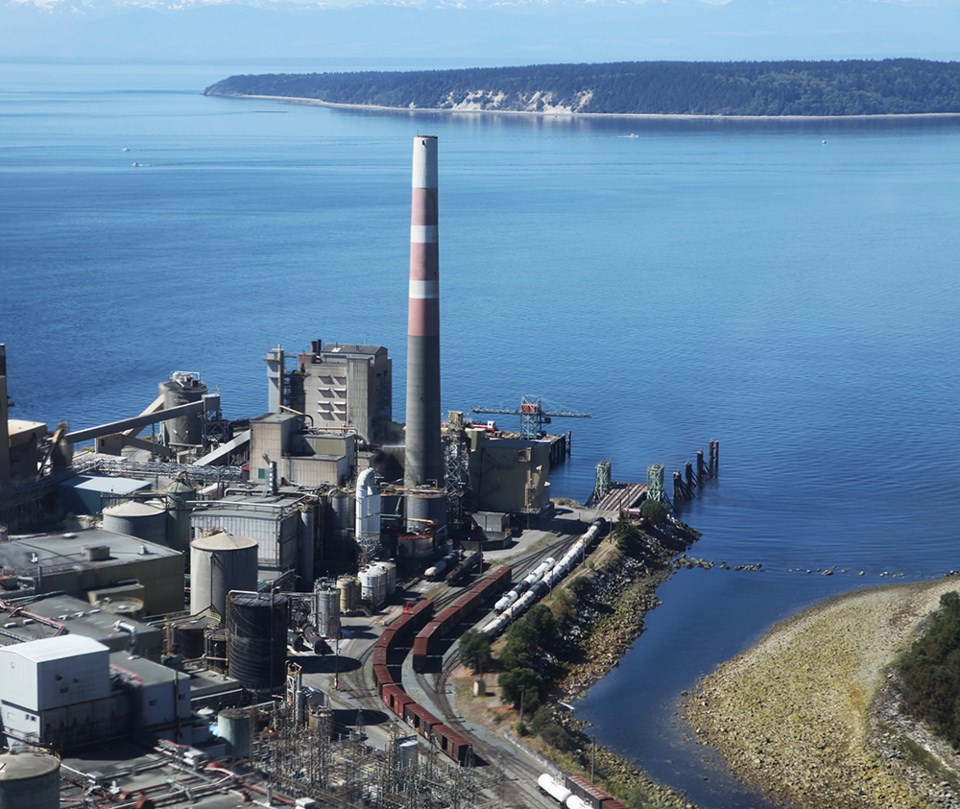Tla’amin Nation has written to Paper Excellence laying claim to the Catalyst Paper Tis’kwat mill site and Lot 450.
Correspondence from Tla’amin hegus John Hackett to Paper Excellence stated that with the recent closure of the Tis’kwat Catalyst mill and the planned sale of the mill site, the nation was writing to reaffirm its collective title to Lot 450, including the current site of the mill lands.
“The Tla’amin village of Tis’kwat dates back millennia,” stated Hackett. “Our history tells us that our peoples have been here since time immemorial. Western modes of archaeological evidence have confirmed that our people lived on this land over 8,900 years ago.
“Tla’amin people were forcibly removed from this site during colonization in the 1800s and the land known as Lot 450 was set aside for the purposes of resource extraction and economic development by settlers. In 1874, a land speculator named Robert Paterson Rithet purchased Lot 450 without Tla’amin Nation’s knowledge or consent.”
Hackett stated that soon thereafter, the river was dammed and the mill was established.
“Tla’amin Nation has always protested the theft of this land and will continue to press for appropriate restoration of these lands and waters,” added Hackett. “For the past 100 years, we have mourned the loss of the sockeye salmon run of Tis’kwat river (Powell River) and thah yetl lake (Powell Lake), a major food source for our nation for over 7,000 years, and one of the most productive sockeye runs on the coast. It is still possible, and it is our obligation, to rehabilitate this resource. Who will bring back the salmon when the mill is sold?”
Hackett stated that for the past 100 years, Tla’amin has watched with sadness and regret as the mill contaminated its land and waters.
“Who will clean up the land and waters when the mill is sold?” asked Hackett. “For the past 100 years, our people have been excluded from the benefits of resource extraction and economic development as a result of the Tis’kwat Catalyst mill and hydroelectric dam. When will those benefits return to our people?
“Our nation is taking the time to write this letter to assert that in the over 100 years of wrongdoing, we have never conceded our claim to this land. We call on our friends, our neighbours and our treaty partners to acknowledge this wrongdoing, and acknowledge the need for redress and reconciliation at the Tis’kwat Catalyst mill site.”
Hackett stated that Tla’amin’s treaty with federal and provincial governments recognizes its historical occupation of the mill site and the nation’s inherent right of ownership of the land.
“Our treaty also preserves our nation’s right to a specific claim to the Tis’kwat mill site,” stated Hackett. “We want to remind the guests who live in our territory that we have never given up our claim to this land. We want the world to know that this is our land and we will fight to get it back for our people, our nation, and for the benefit of everyone who lives in this beautiful area.
“We can come together around our shared goals to restore the beauty and bounty of this place. We invite you to join us.”
The Peak reached out to Paper Excellence for comment on the letter and received the following from Graham Kissack, vice president, environmental health and safety and corporate communications:
“While some of the Tla’amin’s concerns outlined in their letter sent on May 12 are outside Paper Excellence Canada’s jurisdiction, we remain committed to transparent communication with the Tla’amin on the company’s next steps regarding Catalyst Paper Tis’kwat,” stated Kissack. “As always, we appreciate the Tla’amin’s patience as we work through this process.”




